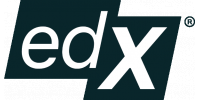- From www.edx.org
The History of Medieval Medicine Through Jewish Manuscripts

- Self-paced
- Free Access
- Fee-based Certificate
- 4 Sequences
- Advanced Level
Course details
Syllabus
Module 1: This module will introduce the ideas of the manuscript and codex as distinctive types of historical evidence. It will also discuss the languages of the codex at hand (Penn MS 1649), and discuss the languages of Jewish medical writing in the 15th c. Module 2: This module will introduce the colophon, a scribal note that may appear at the end of a manuscript, which says when and by whom a text was copied. The colophon in question comes at the end of the first text under discussion in the codex: Sa’ īd b. Hibat Allāh, al-Mughnī fī Tadbīr al- Amrāḍ (All You Need to Manage Diseases), and tells us not only about the transmission of the text, but the colophon’s unusual messianic poem also reveals the Jewish place in a politically precarious world. Module 3: This unit continues to explore the meaning of various physical features of the manuscript from module 2 (All You Need to Manage Diseases). Even without indices or modern apparatuses, Langermann shows how the medical work, whose main aim was diagnosis and treatment, made itself a useful reference guide for practicing physicians through a series of compositional and inscriptional decisions. That the text was indeed useful and used in many places over many years can be seen through wear and tear as well as the polyglot marginal glosses. Module 4: This module focuses on a text by the Islamic/Persian physician and thinker Abū ‘Alī Ibn Sīnā (Avicenna), al-Adwiya al- Qalbiyya (On Cardiac Drugs). Cardiology was the study of how the body manages emotions through the vascular system. Here we see how medieval medicine fused categories such as “vital spirit” and body in ways alien to modern contemporary thinking. Module 5: This module looks at the nature of aromatic treatments for “cardiac” ailments of the emotions in Abū ‘Alī Ibn Sīnā (Avicenna), al-Adwiya al- Qalbiyya (On Cardiac Drugs). The turn to specifics allows deeper penetration into the workings of manuscripts. We can see how texts were emended, and why, and see some telling marginal glosses. These corrections and additions allow us to see traces of the linguistic shifts, translations, and regional dialects that in turn reflect the complex social history of medicine and the transmission of texts around the medieval Mediterranean. Module 6: This module focuses on the third major medical text in this codex, by the Persian Alī b. al-’Abbās al-Majūsī, titled al-Kāmil fī Ṣinā’at al- Ṭibb (The Complete Art of Medicine). This work was the most comprehensive textbook of medicine of its time prior to the advent of Avicenna’s Canon of Medicine, which superseded it 100 years later. Scribal decisions that deviate from norms of translation give hints about the scribe’s origins. Module 7: This module reflects on the codex as a whole, with notes on what can be learned from the materiality of the book itself: overlooked paratextual elements such as covers and blank pages. The informal glossaries jotted in the blank pages by the texts’ owner give us amazing insight into everyday language and life. Module 8: Conclusions about the manuscript: its many corrections and notes are a snapshot of how knowledge itself travels and evolves. Then as now.
Prerequisite
Instructors
Y. Tzvi Langermann
Professor, Department of Arabic
Bar-Ilan University, Israel
Editor
The University of Pennsylvania (commonly known as Penn), founded in 1740, is a private university located in Philadelphia, Pennsylvania, USA. A member of the Ivy League, Penn is the fourth oldest institution of higher learning in the United States and considers itself the first university in the United States to offer both undergraduate and graduate degrees.

Platform
Harvard University, the Massachusetts Institute of Technology, and the University of California, Berkeley, are just some of the schools that you have at your fingertips with EdX. Through massive open online courses (MOOCs) from the world's best universities, you can develop your knowledge in literature, math, history, food and nutrition, and more. These online classes are taught by highly-regarded experts in the field. If you take a class on computer science through Harvard, you may be taught by David J. Malan, a senior lecturer on computer science at Harvard University for the School of Engineering and Applied Sciences. But there's not just one professor - you have access to the entire teaching staff, allowing you to receive feedback on assignments straight from the experts. Pursue a Verified Certificate to document your achievements and use your coursework for job and school applications, promotions, and more. EdX also works with top universities to conduct research, allowing them to learn more about learning. Using their findings, edX is able to provide students with the best and most effective courses, constantly enhancing the student experience.

